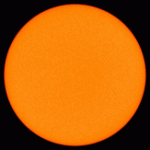Five-year old’s eyes
Is there a way to predict empathy and/or empathic potential within a person based on the appearance of their eyes? Might a link exist between large pupils and empathy? Based on anecdotal observation, I suggest considering the possibility.
Without knowing of a confirmed correlation between large pupils and empathy, I’ve thought about a few questions regarding the significance and implications of such a link, should it exist.
As Rupert Sheldrake has done with creative confirmations of prior thought experiments, we may design a statistically-significant study of whether or not a link between eye appearance and empathy exists. Simple observations may put light on the question in the meantime, but we should remember a few things before drawing conclusions.
Certain physiological conditions can create a apparent lack of empathy, or lack of empathetic display, at least, such as that noted in individuals within the autism spectrum. Cases of autism continue to rise, so determining whether the autistic individual’s pupil size is significantly different than the non-autistic individual’s shouldn’t be difficult. Do they have smaller pupils than those with higher degrees of empathy – or might we discover they have the largest pupils? Whichever the case, that finding would significantly impact the conclusions of the research.
Environmental chemicals and the use of certain pharmaceuticals and street drugs may artificially shrink pupils. Using acceptable protocol we can possibly show a correlation between chemical and pharmaceutical effects on pupil size and empathic tendencies.
Newborn children, in particular, often (not always) seem to have very large pupils, as I’ve observed in my family and friends’ children. The pupils of an indigo child or starseed are immeasureable expanses of truth and cosmic understanding, perhaps moreso in an encouraging environment. I have noted this characteristic in people of all ages who are filled with love and light.
Some have speculated that most children are born empaths. But, as seems to be the case in certain recent generations, many lose the capacity for empathy over time. As they grow older, children are conditioned to rely more on sensory and social cues and less on empathetic ones. Their pupils shrink correspondingly so that ironically they seem to follow the “norm,” until by adulthood, many of them have pinpoint pupils. A barrage of envirotoxins ranging from food additives to various dehumanising experiences may also lead to pupil shrinkage over time, with an accompanying attenuation of empathic experience.

